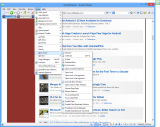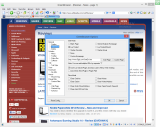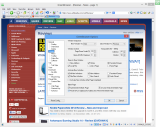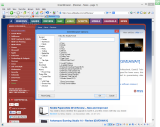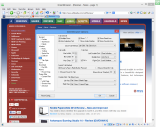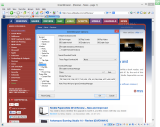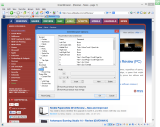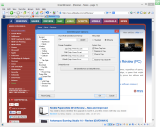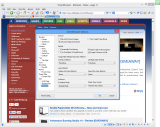On Windows, the web browser market share is dominated by solutions from Google, Mozilla, and Microsoft, but there are other alternatives available, some getting very close to the features and usability present in Chrome, Firefox, and Internet Explorer.
GreenBrowser is actually an IE clone that has been customized with options and features that might appeal to some of the users.
The application does not pack its own rendering engine and relies on IE’s to carry out its job. Because of this, it comes as a very small download. The portable version is a 1MB archive that extracts into a 2.5MB folder.
If you choose the install version, things aren’t much different as the installation folder in our case was around 3MB in size.
Showing a classic layout of the menus coupled with a toolbar above the tab bar, GreenBrowser’s interface seems like a blast from the past compared to what the major players offer today.
The application window is crowded with elements that used to make a huge difference back in the day: “back” and “forward” functions, separate “new tab,” “stop,” “refresh,” and “home” buttons, various search options as well as a “find in page” button.
Clutter is present at the bottom of the browser window too, where you can find more functions along with information about the RAM currently available and the time.
We tried to run it through the usual JavaScript benchmarks (Octane, Kraken, and SunSpider), but the individual tests took too long to complete and we had no choice but to abort the endeavor. However, we checked its compatibility with HTML5 and found that GreenBrowser had been identified as Internet Explorer 10.
The score was 329 points out of a total of 555, a little under what HTML5test.com reported for Microsoft’s web browser (335 points).
Although GreenBrowser does not lack the general functionality encountered in the more popular browsers, it sticks to the classic structure of this sort of applications and fails to deliver the current standard in usability.
The new tab page sports a total of 20 slots for storing interesting links. It is not populated automatically with the most frequently accessed sites, though, which puts the user through the process of manually adding the entries.
By default, a confirmation dialog pops up upon closing the program. This, along with other confirmations (for closing all pages or when going to unsafe pages) can be changed from the configuration panel.
Despite the general setup being suitable for the average user, the sheer amount of settings and menus can be overwhelming even for the more experienced ones.
The trend in modern browsers is to make things clear and simple for the user so that they can do more browsing from the get-go, at the same time providing the necessary customization options for more advanced users.
GreenBrowser stays true to the old-fashion approach that promoted the built-in capabilities overtly instead of intelligently hiding and condensing them in simple elements that do not distract the attention from the web page in any way.
On the upside, it brings to the table plenty of cool features. If set to open the last visited pages it first lists all the tabs and lets you choose which ones to launch. On the other hand, this menu (Page Manager) also shows a list with the last closed pages as well as the navigation history.
This sort of behavior comes in handy in case of crashes, although most users would deem it annoying because it prevents them from reaching the desired content faster.
There is no tab pinning and tearing functionality, but you get to lock them in order to avoid navigating away from the opened link, set an access password, or create a group with all open pages (similar to a session).
Moreover, there is the possibility to set different refresh rates for each of the tabs and even mark them not to forget to return.
Mouse gestures are a powerful way to go back and forth online, and GreenBrowser supports them by default. Furthermore, it allows control over the elements that load in a page (images, sounds, video, ActiveX, Java, Flash) and you can also configure the content filter to eliminate advertisements; it doesn’t work flawlessly, but it does clear up the page in most cases.
Overall, GreenBrowser seems to be tailored for just a particular type of users and not for the general audience.
Some glitches occurred during our tests, such as failure to change the size of the player on YouTube from small to large or opening a new tab and having a URL already in the address bar.
Protected tabs are safe only until the program is closed or restarted, because the next session clears the password. However, if you minimize GreenBrowser and the active tab is password-protected, upon restoring, the countersign is required to access the page.
 14 DAY TRIAL //
14 DAY TRIAL // 



